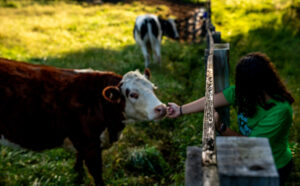That innovation continues today in every county in America – rural, suburban and urban. In New York City, for example, there’s an urban fish farm located in the basement of Food and Finance High School thanks to Cornell University Extension and 4‑H. Students raise tilapia and other fish and vegetables in the 4‑H Hydroponic and Aquaculture Lab for distribution to the school cafeteria, local restaurants, greenmarkets, and hunger relief organizations. Nearly 2,500 miles away at the Tucson Village Farm, Arizona 4‑H’ers built and maintain an urban farm through the University of Arizona and Pima County Cooperative Extension where kids learn how to make healthier decisions by growing and preparing their own foods. In between, in Garden City, Kansas, multi-cultural college students from Kansas State University Extension started several 4‑H clubs to support the children of parents working in dairies, feedlots and meatpacking. These are just three examples of how 4‑H and Cooperative Extension are benefitting and changing the lives of more than 6 million young people in the U.S.
We believe young people are the world’s greatest single resource to create a better world. Our job at 4‑H, working in partnership with USDA, Cooperative Extension and many private companies and organizations including Farm Credit, is to grow young people with confidence and purpose. In our view, we have a responsibility to give millions more young people access to the 4‑H experience – no matter where they live: in an urban food desert, in a tight-knit small town, on a U.S. military base or on a farm.Today’s young people are the innovators and leaders of tomorrow. Thanks to 4‑H and Cooperative Extension, millions of young people are learning skills that are preparing them to become the technological and agricultural leaders of the future.They are blazing the trail that will lead us into the next century thanks to the Smith-Lever Act of 1914. Here’s to the next 100 years!
Of note: Originally published on the Farm Credit blog, AGgregator, at http://bit.ly/Qi8eCA
















